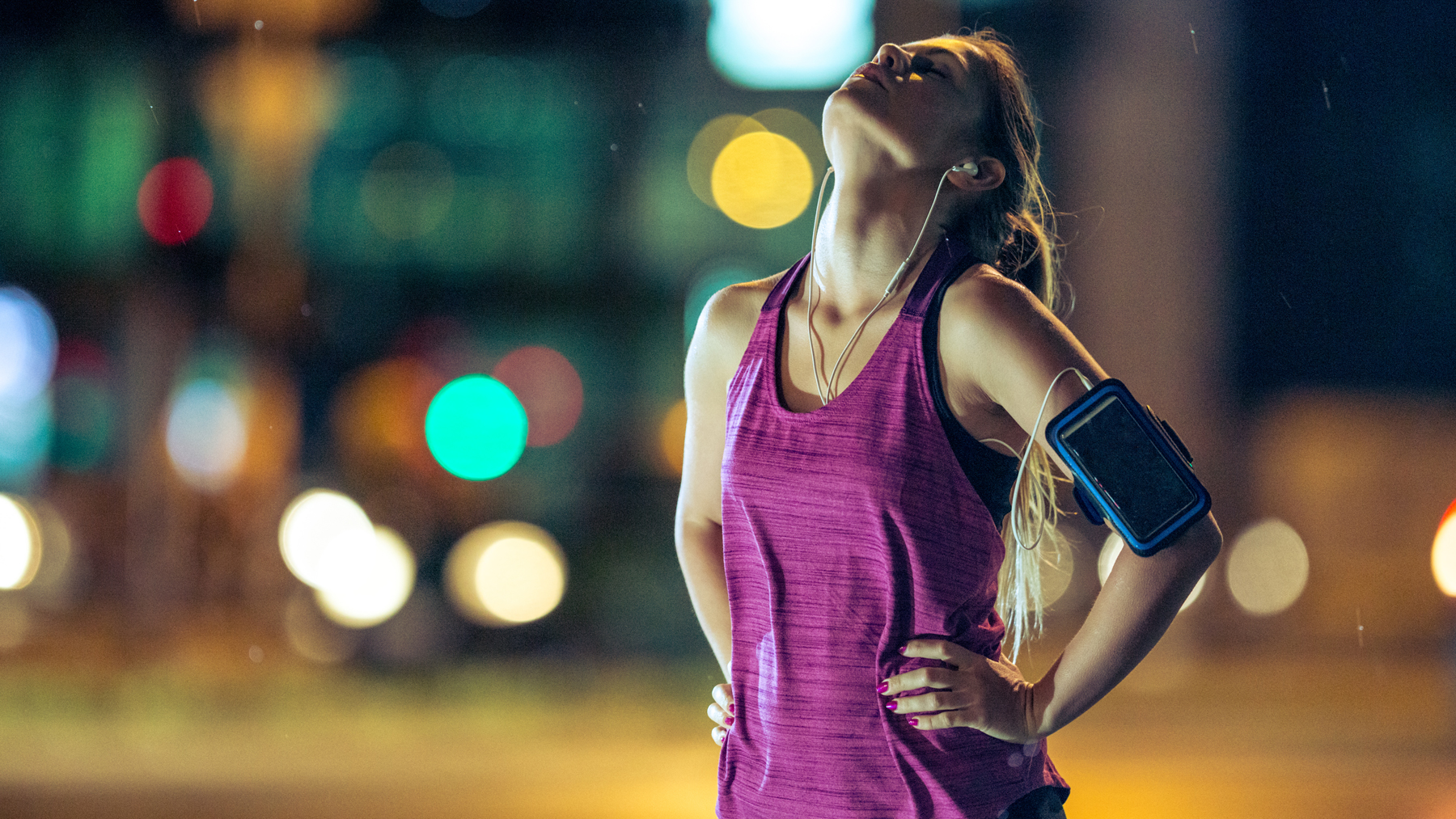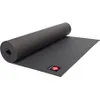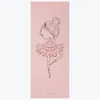
Breathing exercises can help ease anxiety, regulate your nervous system and promote relaxation and calm, so why do so many of us avoid breathwork, then?
I recently added three simple breathing exercises into my morning or nighttime routine to see if they could boost mental strength, improve mood and mental clarity, or help me sleep better. To be honest, I’d happily jump on any of these benefits if breathwork could help.
And the best news is, anyone can do them. I spent a few minutes in the morning, evening, or both, working through these breathing exercises for beginners, then logged my feelings after each session and continued to track my sleep and stress levels using my Oura Ring. Here’s what I learned, and how to do the exercises yourself.
What is breathwork?
Breathwork is trending, according to Garmin's Fitness Report. And finally. According to the Cleveland Clinic, “breathwork” can be described as intentionally channeling and focusing your breath with techniques to “calm the body and mind.”
Breathwork for beginners is widely accessible these days, and even influential celebs like Chris Hemsworth use breathing techniques as part of a well-rounded health and fitness routine.
And no, you don’t have to meditate, sit in a dark room alone with your thoughts, or employ a regular yoga practice to try it — everyone can benefit from breathwork.
What does breathwork do?

To understand why you’re doing it, think of your autonomic nervous system as two strands: the sympathetic nervous system (fight-or-flight mode) and the parasympathetic nervous system (rest and recover).
When presented with a dangerous situation, the sympathetic nervous system activates, which controls hormone responses like cortisol and adrenaline. It’s a built-in system to help us tackle danger effectively.
However, the body can’t differentiate between actual and perceived danger, meaning a stressful day at work can activate your fight-or-flight response like a lion chasing you would. On the flip side, when the parasympathetic nervous system is activated, the body can relax, recover and repair — it’s the happy place.
Sadly, due to our “go, go, go” lifestyles, we humans aren’t great at staying in the parasympathetic nervous system for too long, which is when a few breathing exercises could come in handy to help activate it.
Although breathing exercises can provide an instant shift in mind and body, it’s recommended that anyone using them should do so regularly for best results. But the payoff could be worth it, with many people reporting reduced anxiety, better sleep and improved focus and energy.
Breathwork for beginners: 3 exercises to try
Syncing your breath and heart rate can act like a remote control for your nervous system, so if you find it difficult to focus or relax, channeling your breath is a brilliant place to start. Here are three techniques to try.
1. Diaphragmatic breathing
Diaphragmatic breathing also known as “belly breathing” or “deep core breathing” (breathing expansively toward your belly rather than your chest) could help engage your core muscles, which are crucial for supporting a healthy back, posture and safe movement and is the most important thing to do when working your abs.
Diaphragmatic breathing engages the diaphragm, which technically counts as a powerful core muscle responsible for aiding breath. One review by Complimentary Therapies in Clinical Practice found that a 30-day diaphragmatic breathing practice could also reduce blood pressure and heart rate and promote feelings of relaxation.
I’m not a breathwork teacher or mindfulness expert, but I teach diaphragmatic breathing techniques during workouts to help engage the core muscles and reduce restrictive chest breathing during cardio or weightlifting.
To do it, sit or lay down, with one hand over your heart and the other over your lower stomach. Start deeply inhaling through your nose, feeling your stomach gently rise and expand as your ribcage lifts. On the exhale, allow your chest and stomach to fall and soften, drawing your stomach toward your spine and pulling the ribcage down. I ask clients to imagine inflating and deflating a balloon over and over.
As you feel more comfortable with the breathing method, imagine pushing your pelvic floor downward on the inhale and slightly upward using gentle contraction on the exhale. Continue for at least 10-15 rounds of breathing, or several minutes if you prefer.
2. Box breathing

While diaphragmatic breathing can help engage the pelvic floor and core muscles, box breathing is a deeper yogic breathing practice. As you breathe, imagine following along the four sides of a box: inhale for four seconds, pause at the top of your breath for four seconds, then exhale for four seconds and hold again for four seconds. Cycle through several rounds or repeat for several minutes if you prefer.
Coupled with the breathing technique is a counting exercise that can act as a meditation to focus the mind and promote deep relaxation.
I have ADHD, so my ability to focus and stay anchored in the present moment isn’t my strongest suit, which is why I like to use guided box breathing with Headspace when I practice this mindfulness technique. Remember to inhale through your nose and exhale through your mouth.
A 2023 study published in Cell Reports Medicine has shown that breathwork, including box breathing, particularly “exhale-focused cyclic sighing” can boost mood and reduce respiratory rate. The research recommends daily five-minute practice as an “effective stress management exercise.”
3. Lion's breath
The third breathing exercise for beginners is the lion’s breath or Simhasana pranayama, commonly used during yoga. It involves taking a deep nasal inhalation, sticking out your tongue and then exhaling loudly through your mouth while making a “ha!” sound. It’s said to help regulate breathing, stimulate the diaphragm and throat and have a cooling effect on the body.
Specific research into lion’s breath is limited, but considering pranayama means "breath regulation", the effects are believed to be similar to other breathing exercises, such as better mood and boosted lung capacity. One study into pranayama and asthma patients found regular practice could be beneficial to reduce hyperventilation and improve endurance.
For this practice, I enjoy following Yoga With Adriene’s video online to help keep me in step, and it helps pep me up if I’m feeling nervous or anxious before social situations.
Here’s what happened when I tried these 3 breathing exercises for beginners
I’m no stranger to breathing exercises. I’ve even turned to tools like Aerofit's respiratory training device to help strengthen my core and breathe better. Breathing properly is crucial during exercise and for building mental stability while helping to engage your core muscles, reduce anxiety, boost mood and well-being and relieve stress.
That said, it works differently for everyone, and you should always seek advice from a qualified medical physician if you’re unsure if a breathing exercise is off the table for you. Examples include certain lung or heart conditions, or low or high blood pressure.
I added these three breathing techniques into my daily routine for several weeks, finding them to be either deeply relaxing (hello, box breathing) or energizing and revitalizing (lion’s breath).
I typically use lion’s breath after a particularly testing yoga pose to re-center myself and let it all go while reserving diaphragmatic breathing before workouts and box breathing for bedtime.
Each exercise only takes a few minutes or several rounds and has an instant positive impact on my mind and well-being. However, just like all exercise, meditation and mindfulness practices, it should be a consistent effort; putting in the groundwork when you feel good will serve you better during the trickier times that crop up unexpectedly in life.
I also kept a keen eye on my Oura stress and sleep reports each morning, but many factors can stop you from having a good night's sleep (alcohol, eating late at night, hotter weather), so it’s hard to say whether box breathing has had much of an impact on my sleep quality. That said, I did feel much more relaxed getting into bed and drifted off more peacefully than scrolling through my phone — no shock there.
If you use an Oura ring and want to learn more about tracking sleep and stress, Oura’s resilience tools could be a great place to start.
More from Tom's Guide
- Stiff hips? This 5-move bodyweight walking workout builds flexibility and a stronger lower body
- What is Moon Breathing?
- 3 things I wish I had known as a yoga beginner
Sign up to get the BEST of Tom's Guide direct to your inbox.
Get instant access to breaking news, the hottest reviews, great deals and helpful tips.

Sam Hopes is a level 3 qualified trainer, level 2 reiki practitioner and senior fitness writer at Tom's Guide. She is also currently undertaking her Yoga For Athletes training course. Sam has written for various fitness brands and websites over the years and has experience across brands at Future such as Live Science, Fit&Well, Coach, and T3.
Having worked with fitness studios like F45 and Virgin Active, Sam now primarily teaches outdoor bootcamps, bodyweight, calisthenics and kettlebells. She also coaches mobility and stretching-focused classes several times a week and believes that true strength comes from a holistic approach to training your body.
Sam has completed two mixed doubles Hyrox competitions in London and the Netherlands and finished her first doubles attempt in 1:11.











